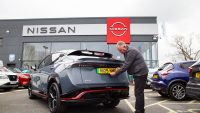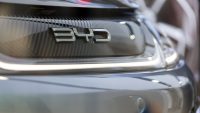CAR DEALER Magazine has been at the National Automobile Dealers Association (NADA) in New Orleans to find out about the exciting new trends and technology over in the US.
Here we run down the top themes of the event, that UK dealers could learn from.
STAFF
A hot topic throughout the event was the question of how to differentiate your dealer from any other, an increasingly important thought as consumers now tend to decide who they will buy their car from online before visiting any dealers in person.
The US market has realised that it is important to know how to grab a customer’s attention up front by means other than improving your website. The conclusion they have come to is that they must invest in their staff to make everything more personal.
It is no longer necessary for someone to be ‘sold’ a car in the traditional sense. The priority is to assure them that you can be trusted. An extreme example of this is one dealership that has classed its entire sales team as self-employed with their own businesses and marketing budget to do with as they see fit. This bold move has paid off with a huge surge in performance. One salesman was taking home around $51,000 (£40,686), but is now earning more than $160,000 (£127,703).
A new business called DealerRater is capitalising on this new trend of more personal dealers. Not only can its users review dealerships, but also the individual sales and service staff they dealt with. This forces everyone to take the element of customer service more seriously in order to avoid receiving a bad review on their company website.
TARGETED MARKETING
There were a massive number of companies at NADA claiming to be able to help dealers with their online marketing. This is not unique to the USA – we will have a number of businesses at CDX17 capable of helping dealers attract customers. Google offer workshops at both conventions to keep the industry ahead of the changes it constantly faces.
Spin Cars are one company who can use data from your website to see which vehicles an individual customer has looked at and what features, such as performance or safety, they were most interested in. With this information, dealers can present customers with tailored adverts with an image of a specific car they may be interested in and a personalised message focusing on the features they looked at most. This approach is said to increase conversion to call rates by more than 50 per cent.
Pure Cars are another company who use mobile technology to deliver data on where telephone enquiries are coming from. They can then tell dealers which cars are most popular in which areas, allowing them to target marketing spend by vehicle. This type of advertising via Google and Facebook is gaining momentum. Although it is unlikely to overtake the UK’s classified sites, it will receive more and more dealer budget.
VIRTUAL REALITY
While at NADA, we tried out virtual reality and self-service sales units. This was a glimpse of what car retail could look like within the next decade.
The self-service units are akin to that which you would find in a supermarket or a Premier Inn. They replicate the features that would be found on a dealer’s website. Customers can book a service or check in for one, arrange a test drive or even buy a car. Although still being in beta, the system is already very simple and easy to use. It most likely won’t be replacing your staff anytime soon, but at $2000 (£1598) a unit it could be a good additional option, especially when the service team are very busy.
Virtual reality may be in its infancy, but it could change the face of car retail over the course of the next few years. US dealers are buying VR headsets for their showrooms. Customers can choose the model of car they want to look at in any colour and specification, walk around the exterior of the car, sit inside it and access specific details. There are a series of drop-down menus that provide information.
While we were impressed, the software was a bit slow and the vehicle rendering needs improving, as it is currently similar to the level of quality you would find in a video game. There should be a big change when 360-degree video is incorporated, so real vehicles can be seen in VR, both new and used.
SMART DRIVING TECH
Another new technology we experienced at NADA was that of fitting aftermarket car data devices. There were a number of companies at the expo throwing significant marketing and development budgets at this idea.
Verizon has recently launched Hum, a smart system that dealers can offer as an optional extra at the point of sale. By plugging the device into your on-board diagnostics port, you will have access to a number of features, such as a ‘find my car’ option or the ability to automatically call the emergency services in an accident. In addition, the dealer can be notified when the vehicle needs a service or repair, allowing them to proactively contact the customer before they even knew there was an issue.
The service costs $10 (£7) a month and allows parents of young drivers to keep an eye on their children’s driving habits or making sure the car isn’t stolen.
This technology is an excellent opportunity for dealers to retain customers, increase revenue and put a bit more in the bottom line of each sale. It’s doing well in the US and could easily be the next big upsell in the UK.
MORE: US dealers face a difficult year as disruptors hit the market
MORE: Pressure to promote motor finance effectively as car prices rise
MORE: Calling all suppliers: Join us at Silverstone for our CDX open day
On SuperUnleaded.com: What would Apple’s car look like if it were inspired by its products?


































